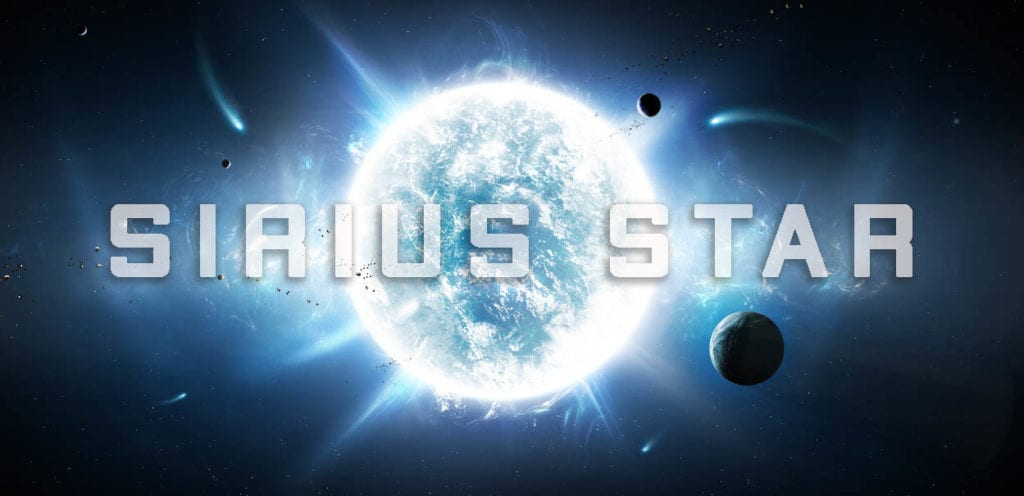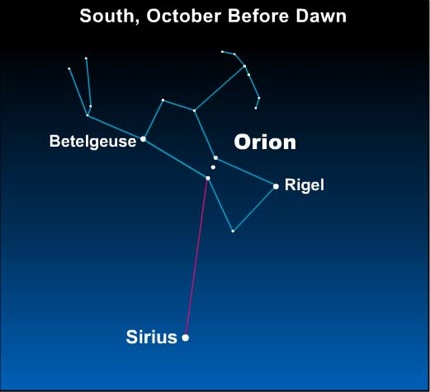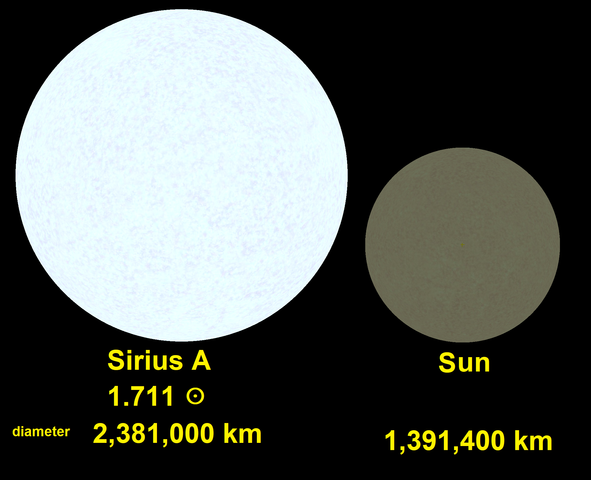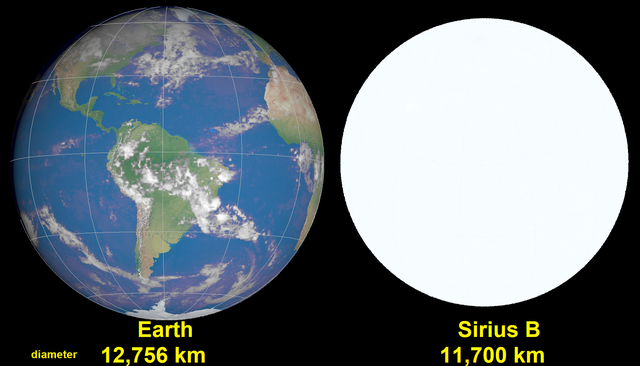The Sirius star is around 25 times brighter than the Sun. The name Sirius is derived from the Greek word “Seirios” meaning “glowing” or “scorching”.

Sirius is a binary star system. The primary star is Sirius A, a main-sequence star of spectral type A0 or A1, and the companion star is a faint white dwarf star, designated Sirius B. It is of the spectral type DA2. Sirius B was actually the very first white dwarf to be discovered.
Despite the fact that Sirius appears brighter than Canopus in Canis Major, it has a significantly lower luminosity. It appears so bright because of its closeness to us.
Sirius is known colloquially as the “Dog Star”, reflecting its prominence in its constellation Canis Major, which means Greater Dog. The rising of Sirius marked the flooding of the Nile in Ancient Egypt and marked the “dog days of summer” (hot days) for the ancient Greeks. For the Polynesians, mostly in the southern hemisphere, the rising star marked the coming of winter and it was an important reference for their navigation around the Pacific Ocean.
In pop culture, it is speculated that the character Sirius, in the Harry Potter series, who has a unique ability to transform into a black dog, might have been inspired by Sirius B.
Location

Sirius is located in the constellation of Canis Major. It can easily be located using Orion’s Belt.
Distance and Size
Sirius is only 8.6 light years away from Earth and is the 7th nearest star to our Solar System. One of the reasons it appears so bright is because it is one of the closest stars to us.

Sirius A has a diameter that is almost 171% of the Sun’s diameter. It is around 25 times brighter than our Sun and has a mass 2.02 times that of the Sun. The surface temperature of Sirius A has been estimated to be around 10,000 degrees Celsius.

Sirius B has around 92% of Earth’s diameter. It is only around 3% as bright as the Sun and has a mass about 0.98 times that of the Sun. Sirius B is around the size of the Earth, although its mass is very big in relation. It was was once more massive than Sirius A.
Orbit
Sirius A and Sirius B orbit each other with a distance of about 20 AU, although it varies between 8.2 and 31.5. This is roughly the distance between the Sun and Uranus. They have an elliptical orbit that takes 50 years to complete.
The system is thought to be around 230 million years old. Sirius A has a projected rotational velocity of about 16 km/s.
History and Composition Of The Sirius Star
The Sirius system was originally made up of two bluish stars but the more massive one, Sirius B, consumed its resources and became a red giant before shedding its outer layers and collapsing into its current state as a white dwarf around 120 million years ago. When it passed through its red giant phase, the star may have enriched the metallicity of its companion.
It is thought that Sirius A formed during the collapsing of a molecular cloud. After 10 million years, the internal energy generation was derived entirely from nuclear reactions, meaning the core became convective and used the CNO cycle for energy generation.
Sirius B is primarily made out of a carbon-oxygen mixture that was generated by helium fusion in the progenitor star. The outer atmosphere is now almost pure hydrogen, which is the element with the lowest mass.
There are conflicting pieces of evidence that suggest Sirius appeared redder only 2,000 years ago.
Future Of The Sirius Star
Sirius is gradually moving closer to the Solar System. Because of this, its brightness will increase over the next 60,000 years. After this, its distance will begin to increase, becoming fainter. Although it will continue to be the brightest star in the Earth’s night sky for the next 210,000 years. Around the year 9000, Sirius will no longer be visible from northern and central Europe.
It is thought that Sirius A will completely exhaust its store of hydrogen at its core within a billion years from its formation. It will pass through a red giant stage, then become a white dwarf just like Sirius B. Sirius B has no internal heating source and will eventually cool as the remaining heat is radiated into space over the next two million years.
IMAGE SOURCES:
- Sirius Star image: – https://i2.wp.com/trendintech.com/wp-content/uploads/2017/04/Siriusa.jpg?resize=867%2C420&ssl=1
- Location Of Sirius Star – https://earthsky.org/upl/2014/10/orion-sirius.jpg
- Sirius A size comp – https://upload.wikimedia.org/wikipedia/commons/thumb/5/5f/Sirius_A-Sun_comparison2.png/591px-Sirius_A-Sun_comparison2.png
- Sirius B size comp – https://upload.wikimedia.org/wikipedia/commons/thumb/d/dd/Sirius_B-Earth_comparison2.png/640px-Sirius_B-Earth_comparison2.png